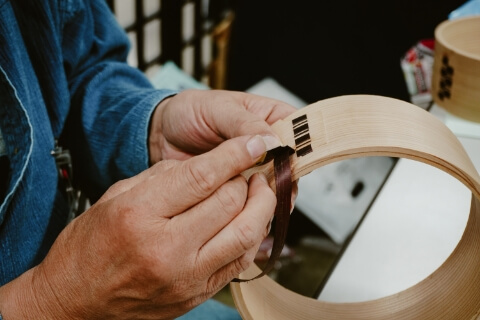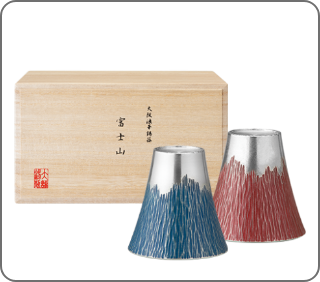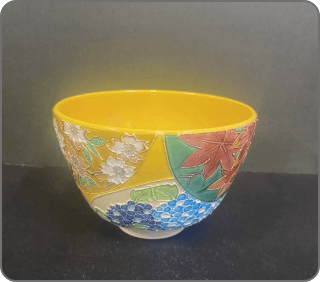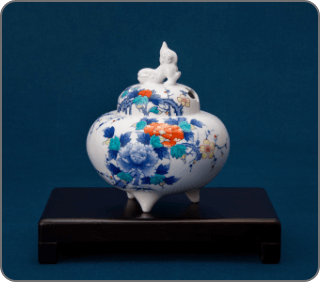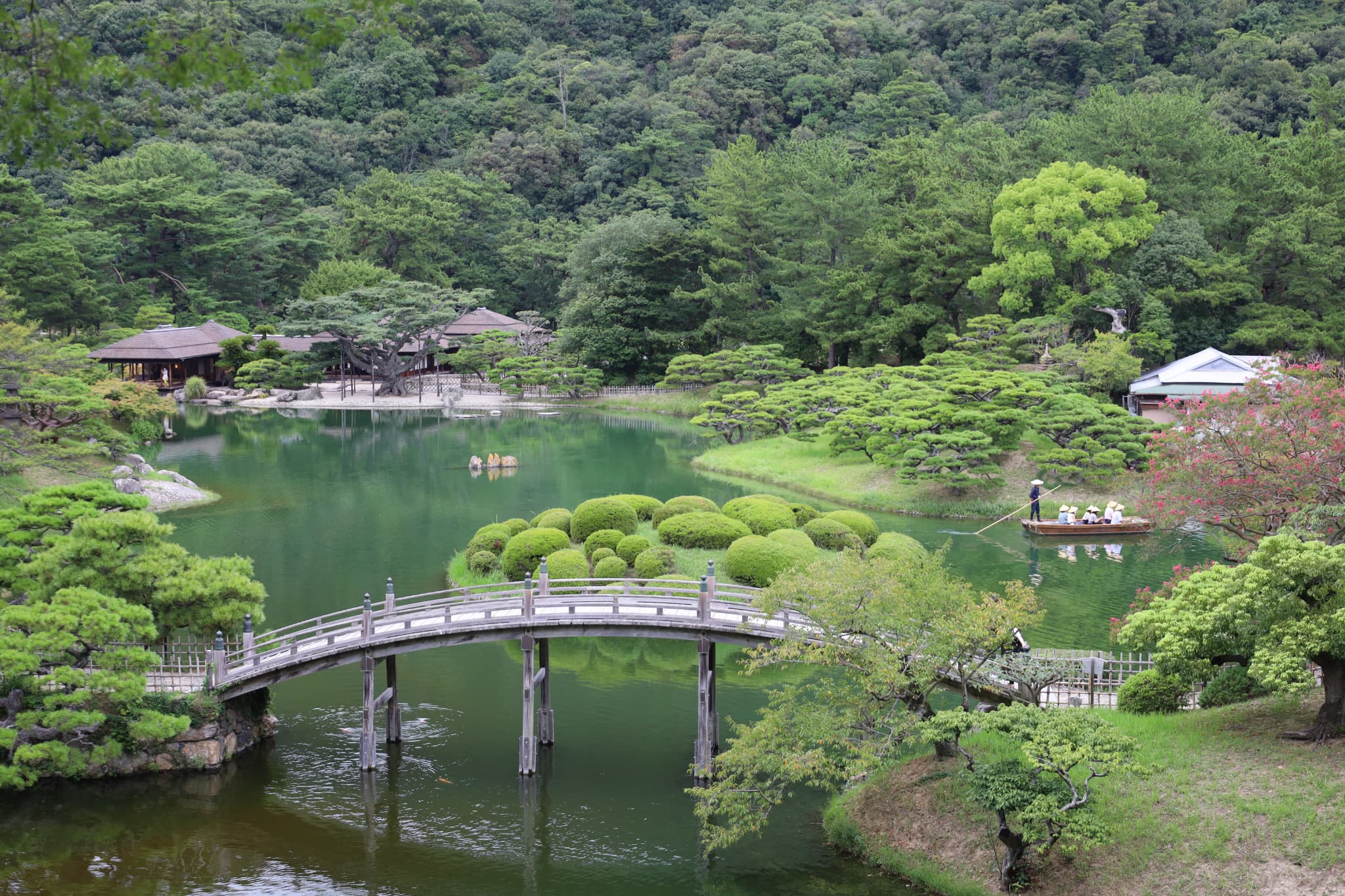


凄腕職人街
Area Map
- West
- East

Traditional Crafts List

Sakai Uchihamono

Osaka Naniwa Suzuki

Nara Fude

Osaka Senshu Kiritansu

Kyo Kanoko Shibori

Kyo yaki Kiyomizu yaki

Imari Arita yaki

Shigaraki yaki

Omi Jofu
Sakai Uchihamono

Sakai cutlery has 600 years of tradition that has been passed down to this day. A characteristic of Sakai cutlery is that it is produced by craftsmen who specialize in each process (blacksmithing, sharpening, and handle attachment). Sakai cutlery is a masterpiece that has a large number of devotees, with 90% of chefs across Japan saying their knives are from Sakai.
Osaka Naniwa Suzuki
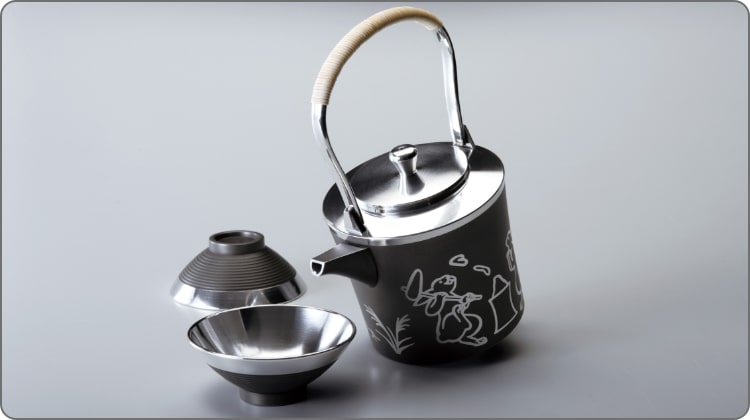
Tinware, which became popular during the Edo Period (1603-1867), was mainly used in the imperial court. There are a variety of styles, from products that have been around for a long time to ones that meet modern needs. Tin doesn't break even if you drop it, which means it lasts a lifetime, and although it is metal tableware, it fits comfortably in your hand.
Nara Fude

Nara brushes are manufactured in the area of Nara City and Yamatokoriyama City, Nara Prefecture. The roots of Japanese brush making are said to be the Nara brush. Using the hair of over a dozen different animals for their construction, each brush is created using a traditional technique called the kneading method, which combines different hair qualities such as elasticity and length.
Osaka Senshu Kiritansu

Osaka Senshu paulownia chests are said to be the "peak of paulownia chests". Osaka Senshu paulownia chests are characterized by the use of thick, carefully selected, high-quality paulownia wood, a large number of assemblers, and the careful construction and finishing. They are made with great care using techniques that have been passed down from generation to generation.
Kyo Kanoko Shibori

Kanoko tie-dyeing got its name from the fact that the pattern resembles the spots on a fawn. Among the approximately 50 different techniques, "Hittashibori" is the most well-known. One tie-died piece can have as many as 150,000 grains in its appearance. Some pieces can take one year to complete.
Kyo yaki Kiyomizu yaki
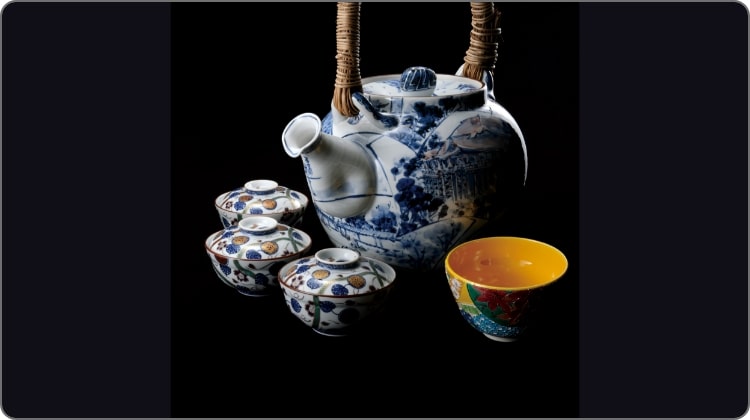
Kyo ware and Kiyomizu ware are the representative pottery of Kyoto. There are no specific clays, glazes, or techniques that define Kyo or Kiyomizu ware. This pottery is a masterpiece that exudes delicate and elegant beauty, and is characterized by its high-class orientation, high decorativeness, and versatility.
Imari Arita yaki
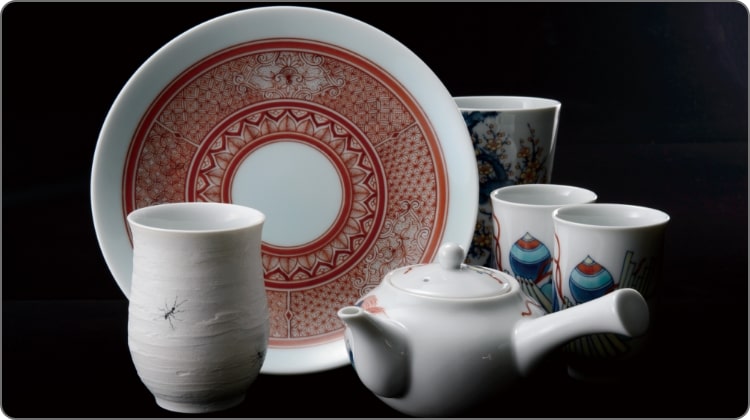
Imari ware is produced in what was once Hizen Province, centered around present-day Arita. Imari ware is also commonly known as Nabeshima ware. These masterpieces are created entirely by one person, from shaping it on the potter's wheel to painting.
Shigaraki yaki
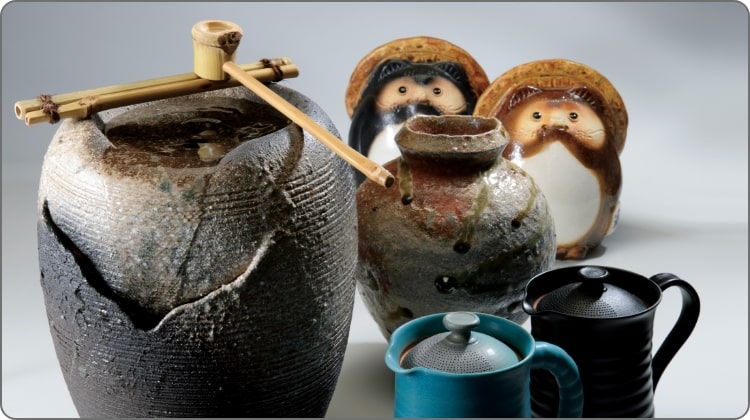
Shigaraki ware is one of Japan's six oldest kilns. Shigaraki ware brings out the unique earthiness of Shigaraki and conveys the nuance of "wabi-sabi" to this day as an art woven from earth and fire. The most distinctive feature of Shigaraki ware is the production of large pieces. Shigaraki is known as a production area that produces large pieces as well as a wide variety of pottery types.
Omi Jofu

Jofu is a plain-woven linen fabric. Omi Jofu fabric was born in a fertile and humid climate, and was given as gifts to the shogunate as far back as the Muromachi Period (1333-1573). It is highly breathable and hygroscopic, has excellent water absorption properties, and is said to develop its own unique appearance the more you use it.







